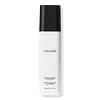What's inside
What's inside
 Key Ingredients
Key Ingredients

 Benefits
Benefits

 Concerns
Concerns

 Ingredients Side-by-side
Ingredients Side-by-side

Water
Skin ConditioningCetearyl Alcohol
EmollientDimethicone
EmollientCeteareth-20
CleansingStearyl Alcohol
EmollientPropylene Glycol Dicaprylate/Dicaprate
EmollientDiazolidinyl Urea
PreservativePropylene Glycol
HumectantPhenyl Trimethicone
Skin ConditioningAminopropyl Dimethicone
Parfum
MaskingDimethiconol
EmollientBehentrimonium Chloride
PreservativeCetrimonium Chloride
AntimicrobialDipropylene Glycol
HumectantQuaternium-91
Cetrimonium Methosulfate
AntimicrobialButylphenyl Methylpropional
PerfumingLactic Acid
BufferingMalic Acid
BufferingLinalool
PerfumingLimonene
PerfumingSodium Hydroxide
BufferingHexyl Cinnamal
PerfumingAloe Barbadensis Leaf Extract
EmollientIodopropynyl Butylcarbamate
PreservativeGeraniol
PerfumingPhenoxyethanol
PreservativeWater, Cetearyl Alcohol, Dimethicone, Ceteareth-20, Stearyl Alcohol, Propylene Glycol Dicaprylate/Dicaprate, Diazolidinyl Urea, Propylene Glycol, Phenyl Trimethicone, Aminopropyl Dimethicone, Parfum, Dimethiconol, Behentrimonium Chloride, Cetrimonium Chloride, Dipropylene Glycol, Quaternium-91, Cetrimonium Methosulfate, Butylphenyl Methylpropional, Lactic Acid, Malic Acid, Linalool, Limonene, Sodium Hydroxide, Hexyl Cinnamal, Aloe Barbadensis Leaf Extract, Iodopropynyl Butylcarbamate, Geraniol, Phenoxyethanol
Lactobacillus/Arundinaria Gigantea Ferment Filtrate
Skin ConditioningAlcohol Denat.
AntimicrobialLactobacillus Ferment
Skin ConditioningPisum Sativum Peptide
Skin ConditioningSalvia Hispanica Seed Extract
EmollientPhyllostachys Bambusoides Extract
Skin ConditioningBambusa Vulgaris Shoot Extract
AntioxidantLactobacillus
Skin ConditioningSaccharomyces Cerevisiae Extract
Skin ConditioningWater
Skin ConditioningCitrus Aurantium Dulcis Fruit Extract
MaskingArtocarpus Heterophyllus Fruit Extract
Skin ConditioningVp/Va Copolymer
Polyglyceryl-3 Caprate/Caprylate/Succinate
EmollientCaprylyl/Capryl Glucoside
CleansingSaccharum Officinarum Extract
MoisturisingZingiber Officinale Root Extract
MaskingMentha Piperita Leaf Extract
Skin ConditioningCitrus Limon Fruit Extract
MaskingTetrasodium Glutamate Diacetate
Sodium Dilauramidoglutamide Lysine
HumectantSaccharomyces/Zinc Ferment
Skin ConditioningSaccharomyces/Copper Ferment
Skin ConditioningSaccharomyces/Magnesium Ferment
Saccharomyces/Iron Ferment
Skin ConditioningPyrus Malus Fruit Extract
Skin ConditioningCamellia Sinensis Leaf Extract
AntimicrobialHexapeptide-11
Skin ConditioningParfum
MaskingChlorphenesin
AntimicrobialPolyglyceryl-10 Isostearate
Skin ConditioningPropylene Glycol
HumectantCitric Acid
BufferingBetaine
HumectantLinalool
PerfumingLimonene
PerfumingCitrus Limon Peel Oil
MaskingCitrus Aurantium Peel Oil
Citrus Aurantium Bergamia Peel Oil
Juniperus Virginiana Oil
MaskingLinalyl Acetate
MaskingPinene
MaskingSantalol
PerfumingCitral
PerfumingVanillin
MaskingLactobacillus/Arundinaria Gigantea Ferment Filtrate, Alcohol Denat., Lactobacillus Ferment, Pisum Sativum Peptide, Salvia Hispanica Seed Extract, Phyllostachys Bambusoides Extract, Bambusa Vulgaris Shoot Extract, Lactobacillus, Saccharomyces Cerevisiae Extract, Water, Citrus Aurantium Dulcis Fruit Extract, Artocarpus Heterophyllus Fruit Extract, Vp/Va Copolymer, Polyglyceryl-3 Caprate/Caprylate/Succinate, Caprylyl/Capryl Glucoside, Saccharum Officinarum Extract, Zingiber Officinale Root Extract, Mentha Piperita Leaf Extract, Citrus Limon Fruit Extract, Tetrasodium Glutamate Diacetate, Sodium Dilauramidoglutamide Lysine, Saccharomyces/Zinc Ferment, Saccharomyces/Copper Ferment, Saccharomyces/Magnesium Ferment, Saccharomyces/Iron Ferment, Pyrus Malus Fruit Extract, Camellia Sinensis Leaf Extract, Hexapeptide-11, Parfum, Chlorphenesin, Polyglyceryl-10 Isostearate, Propylene Glycol, Citric Acid, Betaine, Linalool, Limonene, Citrus Limon Peel Oil, Citrus Aurantium Peel Oil, Citrus Aurantium Bergamia Peel Oil, Juniperus Virginiana Oil, Linalyl Acetate, Pinene, Santalol, Citral, Vanillin
Ingredients Explained
These ingredients are found in both products.
Ingredients higher up in an ingredient list are typically present in a larger amount.
Limonene is a fragrance that adds scent and taste to a formulation.
It's found in the peel oil of citrus fruits and other plants such as lavender and eucalyptus. The scent of limonene is generally described as "sweet citrus".
Limonene acts as an antioxidant, meaning it helps neutralize free radicals.
When exposed to air, oxidized limonene may sensitize the skin. Because of this, limonene is often avoided by people with sensitive skin.
The term 'fragrance' is not regulated in many countries. In many cases, it is up to the brand to define this term. For instance, many brands choose to label themselves as "fragrance-free" because they are not using synthetic fragrances. However, their products may still contain ingredients such as essential oils that are considered a fragrance.
Learn more about LimoneneLinalool is a fragrance and helps add scent to products. It's derived from common plants such as cinnamon, mint, citrus, and lavender.
Like Limonene, this ingredient oxidizes when exposed to air. Oxidized linalool can cause allergies and skin sensitivity.
This ingredient has a scent that is floral, spicy tropical, and citrus-like.
Learn more about LinaloolParfum is a catch-all term for an ingredient or more that is used to give a scent to products.
Also called "fragrance", this ingredient can be a blend of hundreds of chemicals or plant oils. This means every product with "fragrance" or "parfum" in the ingredients list is a different mixture.
For instance, Habanolide is a proprietary trade name for a specific aroma chemical. When used as a fragrance ingredient in cosmetics, most aroma chemicals fall under the broad labeling category of “FRAGRANCE” or “PARFUM” according to EU and US regulations.
The term 'parfum' or 'fragrance' is not regulated in many countries. In many cases, it is up to the brand to define this term.
For instance, many brands choose to label themselves as "fragrance-free" because they are not using synthetic fragrances. However, their products may still contain ingredients such as essential oils that are considered a fragrance by INCI standards.
One example is Calendula flower extract. Calendula is an essential oil that still imparts a scent or 'fragrance'.
Depending on the blend, the ingredients in the mixture can cause allergies and sensitivities on the skin. Some ingredients that are known EU allergens include linalool and citronellol.
Parfum can also be used to mask or cover an unpleasant scent.
The bottom line is: not all fragrances/parfum/ingredients are created equally. If you are worried about fragrances, we recommend taking a closer look at an ingredient. And of course, we always recommend speaking with a professional.
Learn more about ParfumPropylene Glycol is an odorless, colorless liquid. As a humectant, it helps skin retain moisture. It also aids in delivering active ingredients.
Another role of this ingredient is preventing a product from melting or freezing. Propylene glycol also adds antimicrobrial properties to a product, elongating product lifespan.
This ingredient is considered an organic alcohol and commonly added into both cosmetics and foods.
Those with sensitive skin or conditions may develop a rash when using this ingredient.
Learn more about Propylene GlycolWater. It's the most common cosmetic ingredient of all. You'll usually see it at the top of ingredient lists, meaning that it makes up the largest part of the product.
So why is it so popular? Water most often acts as a solvent - this means that it helps dissolve other ingredients into the formulation.
You'll also recognize water as that liquid we all need to stay alive. If you see this, drink a glass of water. Stay hydrated!
Learn more about Water